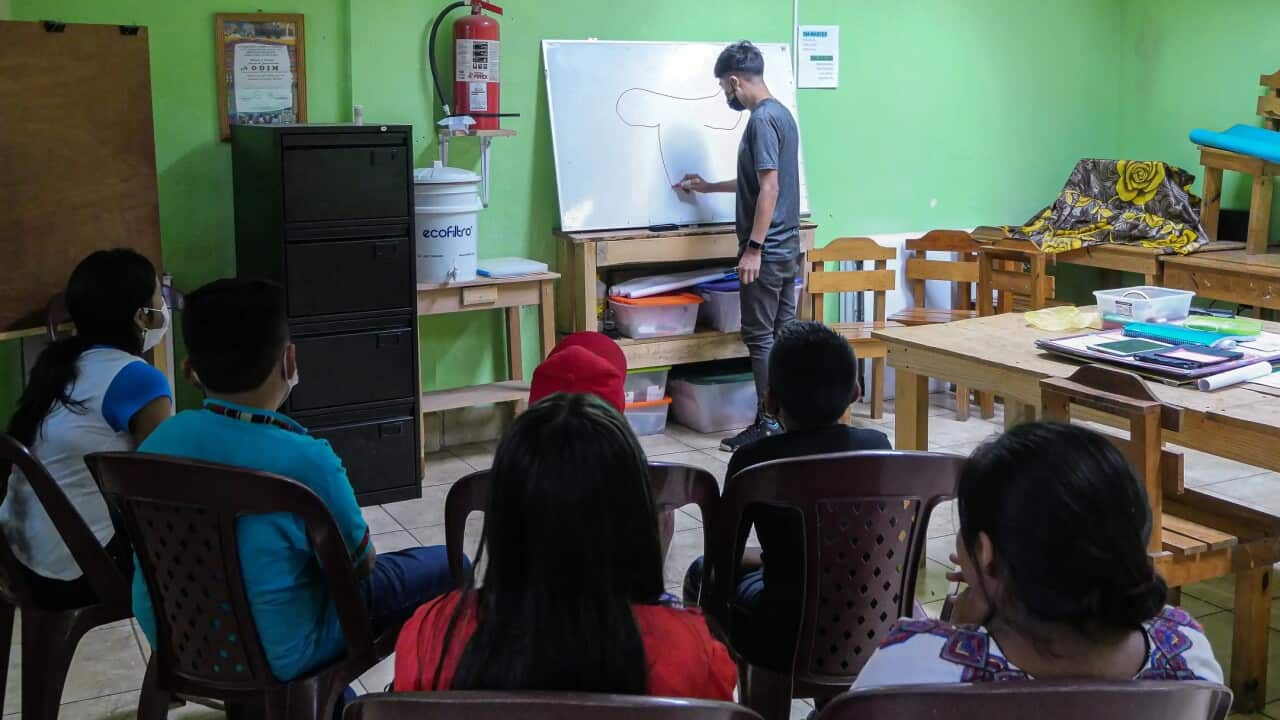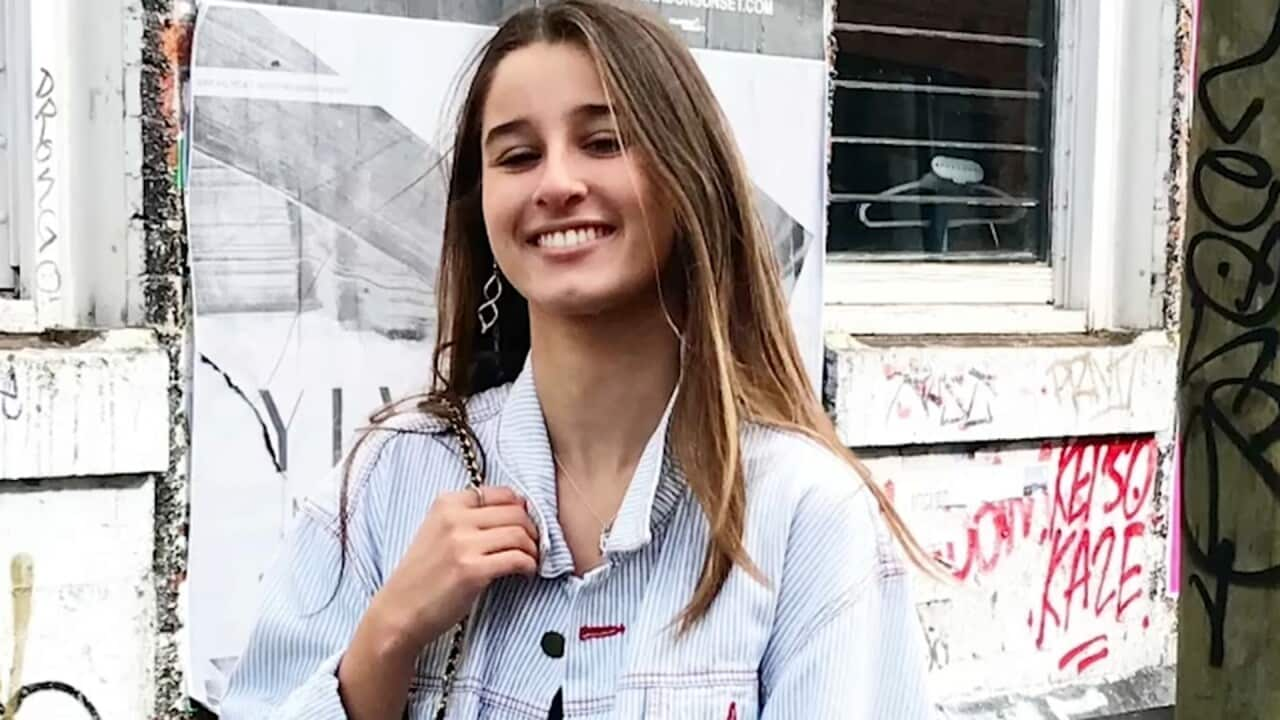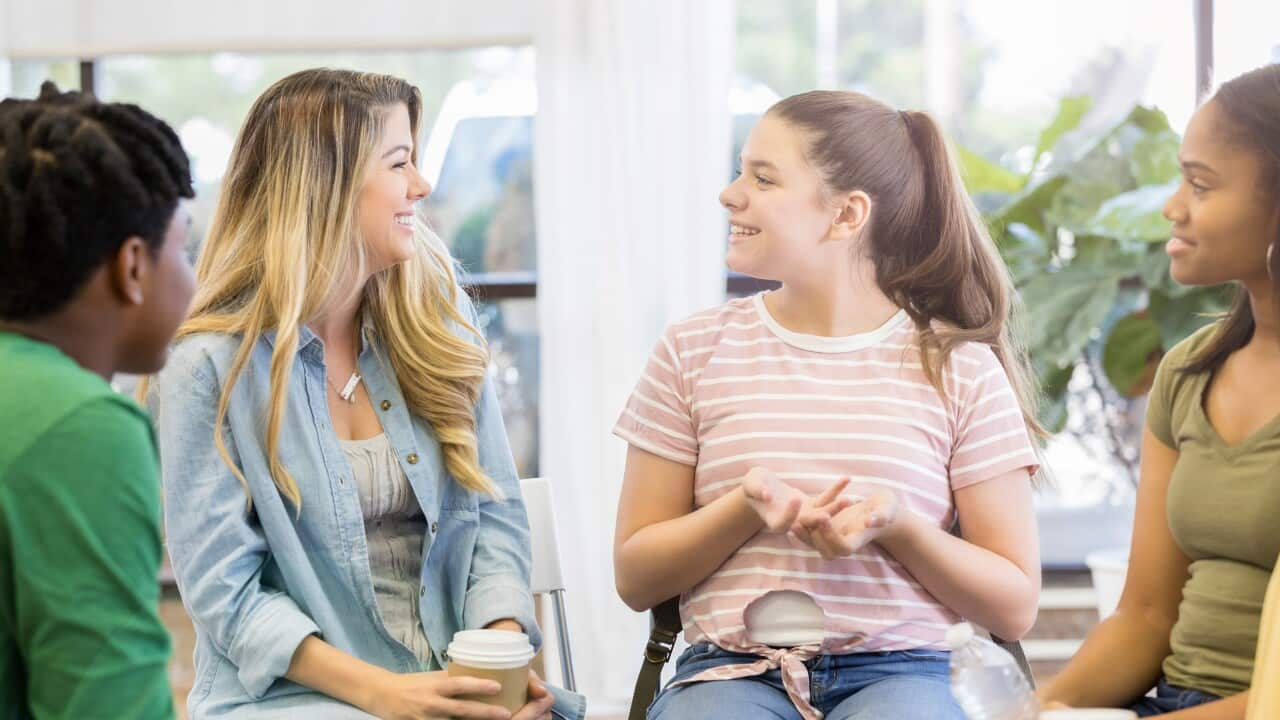

6 min read
This article is more than 2 years old
The classes trying to stop girls as young as 10 getting pregnant
In two of Guatemala's most rural Indigenous communities, teaching sex education to children is met with resistance - but it’s having an impact.
Published 29 October 2022 6:45am
Updated 29 October 2022 6:54am
By Lucy Waldron
Source: SBS News
Image: A new program is tackling stigma surrounding sexual health education in a remote village in the Guatemalan highlands (Supplied / Lucy Waldron)
It’s 2pm at Clinic Chuítinamit in San Pablo la Laguna, an Indigenous Maya village nestled on the shores of Lake Atitlán in the Guatemalan highlands. It’s so remote, you can’t find the clinic on Google Maps - only a tuk-tuk driver familiar with its location can get you there.
Antonio, the clinic’s teacher, starts drawing a uterus on a whiteboard while his students - a mix of adolescent boys and girls - watch. When two of the 13-year-old boys begin to giggle at the drawing, Antonio calls upon them to help him complete it.
It's an important day for the students, who’ll finally be quizzed on what they’ve learned during class over the past few months.

Antonio called on two 13-year-old boys to help draw a diagram of female reproductive organs. Credit: Supplied/Lucy Waldron
ODIM’s work is critical for children in these two communities - home to just over 20,000 people in total - as they receive limited sexual health education at school – if any at all.
Most young people in the Sololá region are not as lucky.
Sexual health is technically in the curriculum, Antonio says, “but schools have trouble with parents that are fearful about teachers talking about it. They fear that the kids might be misled, and the teachers are afraid of repercussion from parents”.
Teachers also lack resources, and women’s sexuality isn’t talked about.
Its deprioritisation not only leaves both boys and girls lacking awareness of how their bodies function, but it also leaves girls and young women to face serious consequences including STD transmissions and unwanted teenage pregnancies.

The village of San Pablo La Laguna on Lake Atitlan, Guatemala. Credit: John Elk III/Getty Images
The Guatemalan Ministry of Education has previously stated that sex education is in the public school curriculum. It did not respond to a request for comment.
Challenging resistance
Benilda Batzin works with marginalised communities to promote the right to health and women’s rights. She is a Maya woman with a degree in social work and says a strong conservative wave in the current government has caused the deprioritisation of sex education in schools.
But the resistance to this type of education stems back decades, and it’s complex, she adds.
In the eyes of many Maya communities, the promotion of family planning – interpreted as having no children – is reflective of the genocidal motives of the 1980s village massacres.
The Guatemalan military carried out 626 massacres against the Maya peoples due to their assumed alliance with fighters acting against the state. According to , there were 200,000 Guatemalans killed and 40,000 were disappeared. Children were often targets.
Additionally, strict Catholicism practised in Guatemala can fuel stigma surrounding sexual health education and family planning, Antonio says.
“Here, religion has a lot to do with the machismo way of thinking.”

Tucked away down an alley, only signified by the red paint on the wall is Clinic Chuítinamit in San Pablo. Credit: Supplied/Lucy Waldron
“Machismo oppresses access to sexual and reproductive education because it limits women to participate in spaces for training and knowledge on the issues that are important for both women and men.”
ODIM’s Adolescent Health program is a free course for adolescents who are starting to notice the changes occurring in and around them.
Thirteen students are taught during each program – they learn about puberty, sexuality, gender equality, consent, menstruation, STDs, human anatomy and more, all of which they would never have learnt in public education.
Julieta Tzaj, the assistant manager of the clinics, says she’s seen their work have a big impact on young people and their families.
“We empower women through the programs we run,” she says.
“We are trying to get the adolescents to know that they have a right to make decisions about their own bodies.”
We empower women through the programs we run.- Julieta Tzaj, ODIM
And the results are promising.
In 2018, when ODIM Guatemala began operations, 78 girls and young women aged 10-19 became pregnant in San Pablo la Laguna, and 59 in San Juan la Laguna.

The alley invites clients with paintings of the program the clinic supports. Credit: Supplied/Lucy Waldron
Of the five groups that have graduated from ODIM Guatemala’s Adolescent Health programs, it's understood only one or two participants have become pregnant since attending.
The next generation
Back in class, young Maya participants are discussing century-old traditions that have defined them by their gender.
Pedro, a reserved 13-year-old boy, says he has learnt that his future role now could be working in agriculture, in a field, but he could also help with cleaning and cooking.
He says he wants to teach what he is learning to his future children too.
Gaby, is a 12-year-old girl who is much less reserved. She’s found confidence through the classes.
“My role is what I make it. I can assume the role of a man or a woman, we don’t have the same bodies, but I can do what men do,” she says.
In a community where – from the moment she is born – a girl’s life can already be set in stone; Gaby is slowly chipping it away.
Gaby believes other communities around Lake Atitlan should have access to ODIM’s resources.

Other communities around Lake Atitlan should have access to the same resources, one student says. Credit: Supplied/Lucy Waldron
After graduating in August, Gaby is now committed to sharing what she learnt at ODIM with other communities around the lake, travelling to communities such as Santa Clara la Laguna.
“The subjects we teach here are not only important but essential for life,” Antonio says.
Lucy Waldron is a freelance journalist from Brisbane. She travelled to Guatemala as part of the program earlier this year.
Would you like to share your story with SBS News? Email


